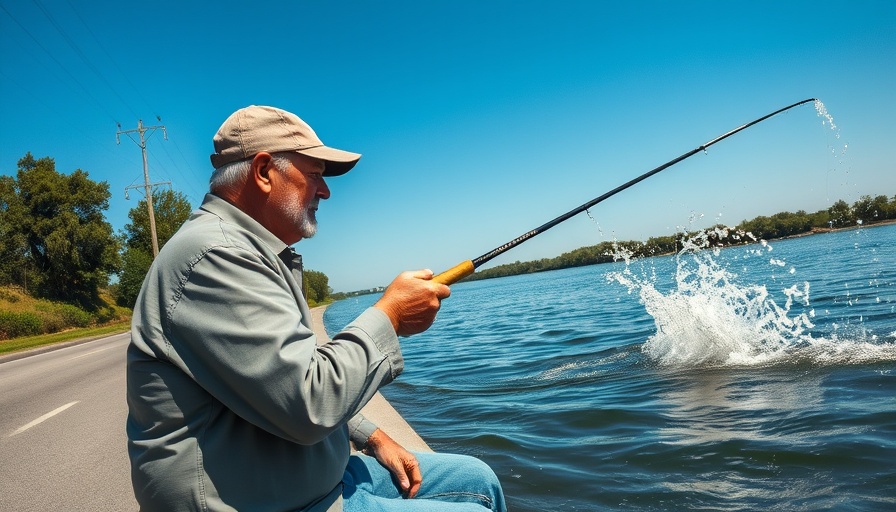
Mastering Roadside Fishing Techniques for Speckled Trout
When it comes to fishing for speckled trout, roadside spots can yield surprising results, especially if you know where to cast your line. In a recent video, the thrill of catching these prized fish proves that much of fishing success hinges on a few essential techniques and a little ingenuity. Let's dive deeper into how these elements come together, making roadside fishing not only effective but incredibly enjoyable.
In 'Roadside Fishing for SPECKLED TROUT,' the excitement of fishing is shared, exploring essential techniques and insights we further analyze.
Understanding the Perfect Fishing Conditions
One of the most important aspects of successful fishing is understanding how environmental factors influence fish behavior. In the video, the angler highlights a key point: fishing in areas where water flows from a ditch can attract fish due to the dynamic interaction between fresh and salt water. This is particularly true during the early spring, when speckled trout embark on their migration towards coastal areas. Knowing when and where to find these fish is critical to a fruitful session.
The Right Gear: Lightweight and Effective
It's not just about finding the right spot; having the right gear is fundamental. The angler in the video uses a PC Fun carbon fiber rod and reel setup, which is lightweight yet powerful enough to handle big catches. This choice demonstrates that comfort and efficiency can significantly enhance your fishing experience, especially if you're spending hours on the bank. For those looking to invest in quality fishing gear, this setup is recommended!
Choosing the Right Bait for Speckled Trout
In the fishing journey illustrated in the video, utilizing the correct bait is made simple. The angler successfully uses a small shrimp imitation and a minnow to lure the trout. By sticking with smaller, more appealing baits, he capitalizes on the trout's feeding habits. This highlights a valuable takeaway: adjusting bait size can lead to better catch rates. Fishermen contemplating what bait to use should consider matching their offerings to the natural food source available in the area.
Fresh Recipes for Your Catch
For an aspiring angler, not only is it about the thrill of the catch but also what comes afterward. Cooking speckled trout can be a delightful experience. Simple recipes that include grilling or frying the fish with a light seasoning accentuate the natural flavors. Additionally, incorporating local ingredients into your dishes can provide a unique twist, making your meal an extension of your fishing adventure.
Engaging with Your Local Fishing Community
Building connections within the fishing community can enhance your experience. Whether sharing tips on local fishing spots, bait recommendations, or recipes, engaging with fellow anglers is invaluable. The video serves as a reminder of this sense of camaraderie. Encouraging viewers to support fishing gear brands or local shops can forge these essential community ties and create a supportive network among fishermen.
In the world of fishing, few activities can compete with the excitement of hooking a big speckled trout right from the bank. The unique advantages of roadside fishing, paired with an understanding of the environment, the right gear, and a good bait selection make it an appealing choice for both seasoned and novice anglers alike. Be sure to embrace these insights to enhance your fishing trips, and remember to celebrate your catches with delicious recipes that showcase your hard work.
Now's the perfect time to explore your local fishing spots for speckled trout. Grab your gear, head to your nearest stream or bayou, and see what you can catch. Happy fishing!
 Add Row
Add Row  Add
Add 




Write A Comment